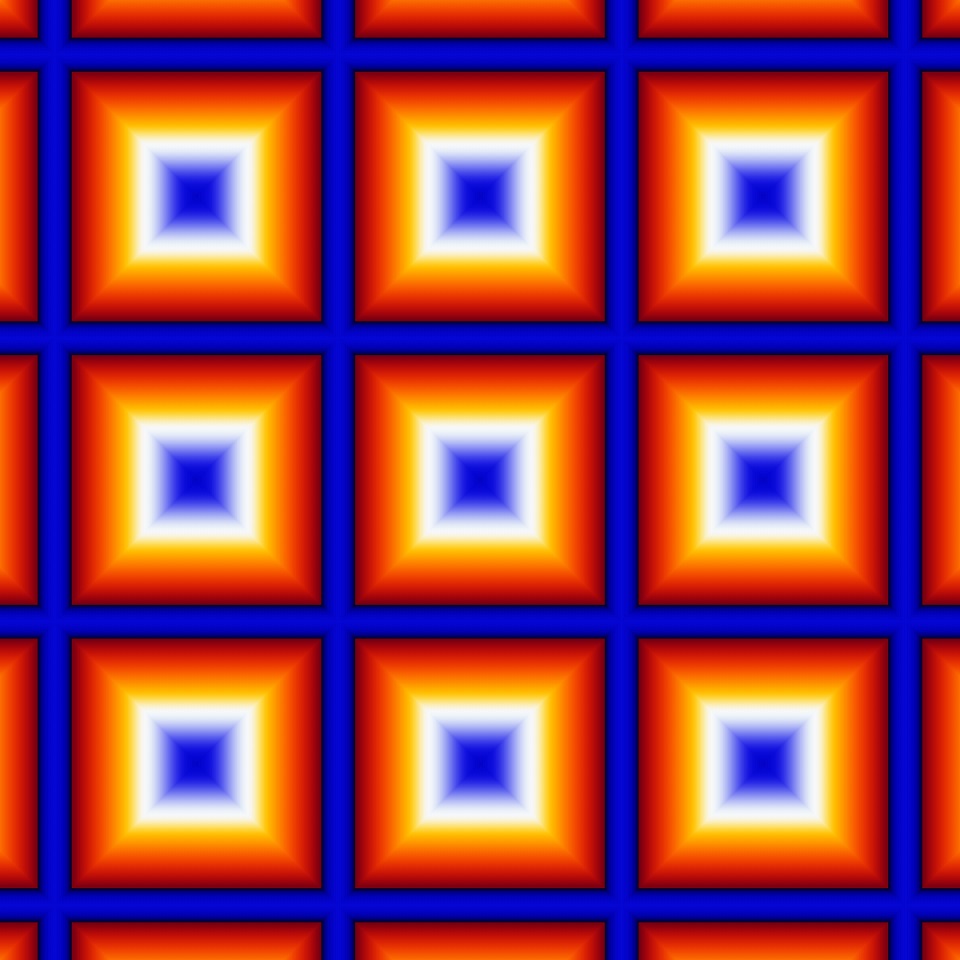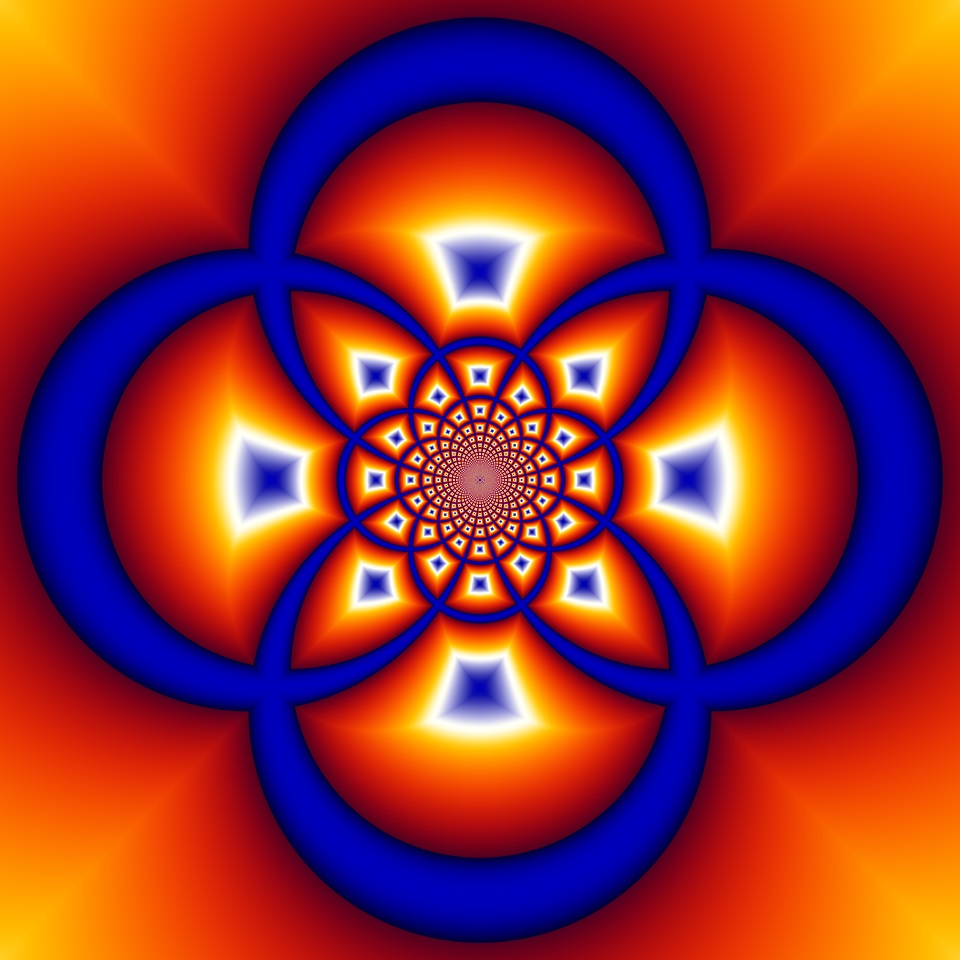I stumbled upon an amazing combination of variables: the standard Pixel formula with Gradient for family Outside coloring (sam.ucl) and the Inverse fractal plane mapping. How does such a transformation take place from a bunch of squares formed by the gradient to a beautiful rounded geometric pattern? I am baffled and pleasantly surprised!


pixelInverseFractalPlane {
fractal:
title="pixel inverse fractal plane" width=600 height=600 layers=2
credits="Kathy;1/20/2020" antialiasing=yes
layer:
caption="Layer 2" opacity=100
mapping:
center=0.00/0.00 magn=1.00112 transforms=1
transform:
filename="Standard.uxf" entry="Inverse" p_radius=1.0 p_center=0/0
p_usescreen=no
formula:
maxiter=25000 filename="Standard.ufm" entry="Pixel"
inside:
transfer=none
outside:
density=1.049392 transfer=linear filename="sam.ucl"
entry="FamilyGradient" p_mode=Squares p_tilem=0/0 p_sizesq=1.18
p_rottile=0.0
gradient:
linked=yes smooth=yes rotation=-47 index=36 color=14356239 index=152
color=16382198 index=216 color=46591 index=369 color=1310828
index=370 color=1966080 index=-9 color=11403778
opacity:
smooth=yes rotation=-47 index=36 opacity=255 index=152 opacity=255
index=216 opacity=255 index=369 opacity=255 index=370 opacity=255
index=-9 opacity=255
layer:
caption="Layer 1" opacity=100 visible=no
mapping:
center=0.00/0.00 magn=1.00112 transforms=1
transform:
enabled=no filename="Standard.uxf" entry="Inverse" p_radius=1.0
p_center=0/0 p_usescreen=no
formula:
maxiter=25000 filename="Standard.ufm" entry="Pixel"
inside:
transfer=none
outside:
density=1.049392 transfer=linear filename="sam.ucl"
entry="FamilyGradient" p_mode=Squares p_tilem=0/0 p_sizesq=1.18
p_rottile=0.0
gradient:
linked=yes smooth=yes rotation=-47 index=36 color=14356239 index=152
color=16382198 index=216 color=46591 index=369 color=1310828
index=370 color=1966080 index=-9 color=11403778
opacity:
smooth=yes rotation=-47 index=36 opacity=255 index=152 opacity=255
index=216 opacity=255 index=369 opacity=255 index=370 opacity=255
index=-9 opacity=255
}